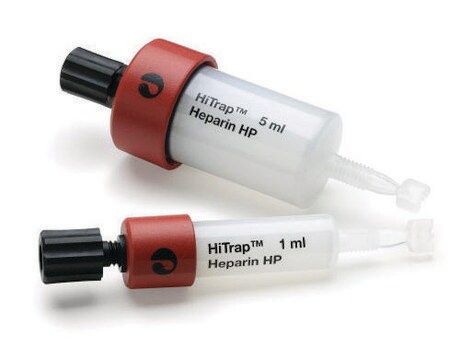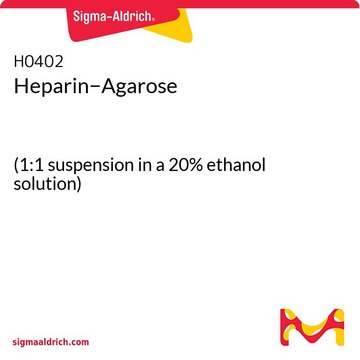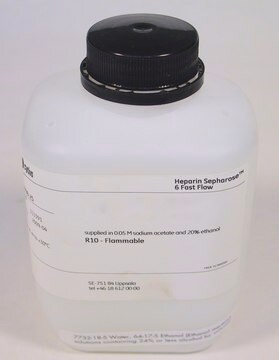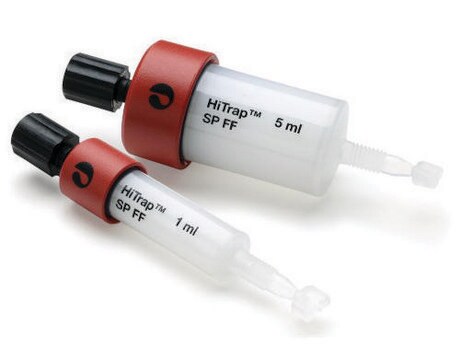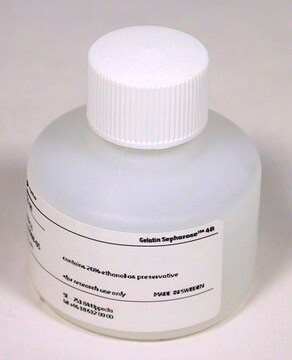H6508
Heparin−Agarose
Type I, saline suspension
Synonym(s):
Heparin beads, Heparin resin
About This Item
Recommended Products
biological source
heparin from Porcine intestinal mucosa
Quality Level
type
Type I
form
saline suspension
extent of labeling
400-1500 μg per mL packed gel (activity approx. 140 USP units per mg)
technique(s)
affinity chromatography: suitable
matrix
cross-linked 4% beaded agarose
matrix activation
cyanogen bromide
matrix attachment
amino
matrix spacer
1 atom
suitability
suitable for chromatography
storage temp.
2-8°C
Looking for similar products? Visit Product Comparison Guide
Application
Physical form
Storage Class
10 - Combustible liquids
wgk_germany
WGK 3
flash_point_f
Not applicable
flash_point_c
Not applicable
ppe
Eyeshields, Gloves, type N95 (US)
Choose from one of the most recent versions:
Already Own This Product?
Find documentation for the products that you have recently purchased in the Document Library.
Customers Also Viewed
Our team of scientists has experience in all areas of research including Life Science, Material Science, Chemical Synthesis, Chromatography, Analytical and many others.
Contact Technical Service